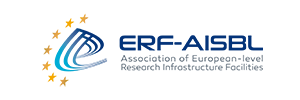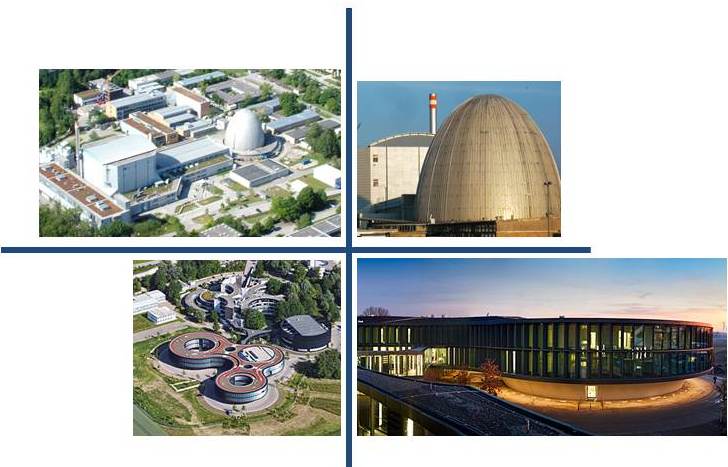Workshop on Public Awareness of Research Infrastructures II
"Communicating the Importance of Science in Society"
Garching, 29-30 May 2017
Science is exciting, enlightening, complex, fundamental, precise, logical, and creative, all at the same time. However, for the public to get in touch with it and understand why it encompasses all these concepts, efforts need to be made to bridge science and society. With this aim, communication teams at research infrastructures work with a range of methods and channels. They make complex information more tangible and disseminate it as broadly as possible so that the public can understand and be engaged.
Co-organised by ERF-AISBL and EIROforum, this conference aims to be a hands-on forum for communication officers and public relations staff to share their experiences and expertise. The aim is that participants return home with new ideas for their work, by learning how and with which means other research institutions are communicating the importance of science and of research infrastructures to society.
History
In 2015 we held the first workshop on Public Awareness of Research Infrastructures. Given its success and very positive feedback from the participants, we are now organising the second edition of PARI. PARI2015 was the 10th of a series of events organised by the ERF-AISBL, the European Association of National Research Facilities. We are glad that the EIROforum joined in for the organisation of PARI2017.
Topics include:
- Evaluation of communication activities and impact.
- Public engagement through visitor programmes and exhibitions.
- Unconventional outreach: thinking out of the box.
- Funding for communication outside the known pathways.
- Engaging the scientists.
- Using online social media channels.
- Enhancing collaboration at research campuses, clusters, and projects.
- Branding and visual identity.
- Communication on a small budget.
- Issues Management and crisis communication.
Time
Keynote Speakers
Start
- 29 May, 2017
End
- 30 May, 2017
Full Timetable:
Other Resources
Venue
Karl-Schwarzschild-Str. 2
85748 Garching
Germany Registration fee 200€ (covers coffee breaks, a lunch, and social dinner in Munich's city centre) Contact Contact us at pari@frm2.tum.de Directions
The Munich FJS Airport is 17km north-east of Garching. The easiest way to get to Garching or ESO Headquarters from the Airport is by taxi. The fare is about EUR 40 and takes roughly 15 to 20 minutes.
Alternatively, if you wish to use Public Transport, you can take the train (S-Bahn S8) from the Airport to Ismaning (20 min.; EUR 6,20) and from there either a taxi (EUR 12-15) or Bus 230 (first bus at 06:11 and then every 20 or 40 minutes until 18:52 on weekdays). Please note that Bus 230 only goes to Garching-Forschungszentrum on working days (Monday - Friday), with a stop in Garching. There is an hourly taxi service from Ismaning to Garching on Saturdays and Sundays. For detailed information, please check the Bus 230 time table. Ticket: “Single Day Ticket outer district".
Or, take the S1 train from the airport to Neufarhn (5min) and there take Bus 690 to Garching Forschungszentrum (total journey time is about 40min, EUR 6,20). Ticket: “Single Day Ticket outer district"
To reach ESO from the Bus stop, please see this map.
The easiest way from the Main Railway Station is to take a taxi to Garching or ESO Headquarters (the fare is approximately EUR 40).
Alternatively, if you wish to use Public Transport (single fare: EUR 5.40), take the S-Bahn (underground railway) from the Main Railway Station to Marienplatz and then the U-Bahn U6 to Garching-Forschungszentrum. Exit the train in the station Garching for the town of Garching and Garching-Forschungszentrum if you want to get to ESO Headquarters.
There is a system of motorways (Autobahn) and ring-roads in and around Munich. For details see the schematic map. Follow these to the Autobahn for Nürnberg (A9). To reach Garching there are two turnoffs (Ausfahrt): Garching-Süd (Garching-South) and Garching Nord (Garching North). Both exists lead you directly into the town of Garching.
If you wish to get to ESO Headquarters, you need to take the turnoff Garching-Nord (Garching-North), which leads you directly to the "Forschungsinstitute" area. Go straight ahead at the traffic lights and continue until the road makes a sharp turn to the left. Do not turn left: ESO is straight ahead.
Organising Institutions
 |
The Heinz-Maier-Leibnitz Zentrum (MLZ) is a leading centre for cutting-edge research with neutrons and positrons. It represents the cooperation between the Technische universität München (TUM) and the three research centres of the Helmholtz Association: the Forschungszentrum Jülich, Helmholtz-Zentrum Geesthacht, and Helmholtz-Zentrum Berlin. |
 |
The ERF-AISBL Association has the not-for-profit purpose to promote the cooperation and the projects between european-level research infrastructures which are open, at international level, to external researchers. These infrastructures include national infrastructures as wel as european networks and consortia of research infrastructures. |
 |
The eight EIROforum organisations have extensive expertise in the areas of basic research and the management of large, international infrastructures, facilities, and research programmes. It is the mission of EIROforum to combine the resources , facilities, and expertise of its member organisatios to support European science in reaching its full potential. By cooperating on large-scale outreach activities, EIROforum communicates the importance and fascination of science to a wide audience. |

|
European Southern Observatory (ESO) is the pre-eminent intergovernmental science and technology organisation in astronomy. It carries out an ambitious programme focused on the design, construction, and operation of powerful ground-based observing facilities for astronomy to enable important scientific discoveries. ESO also plays a leading role in promoting and organising cooperation in astronomical research.
|


